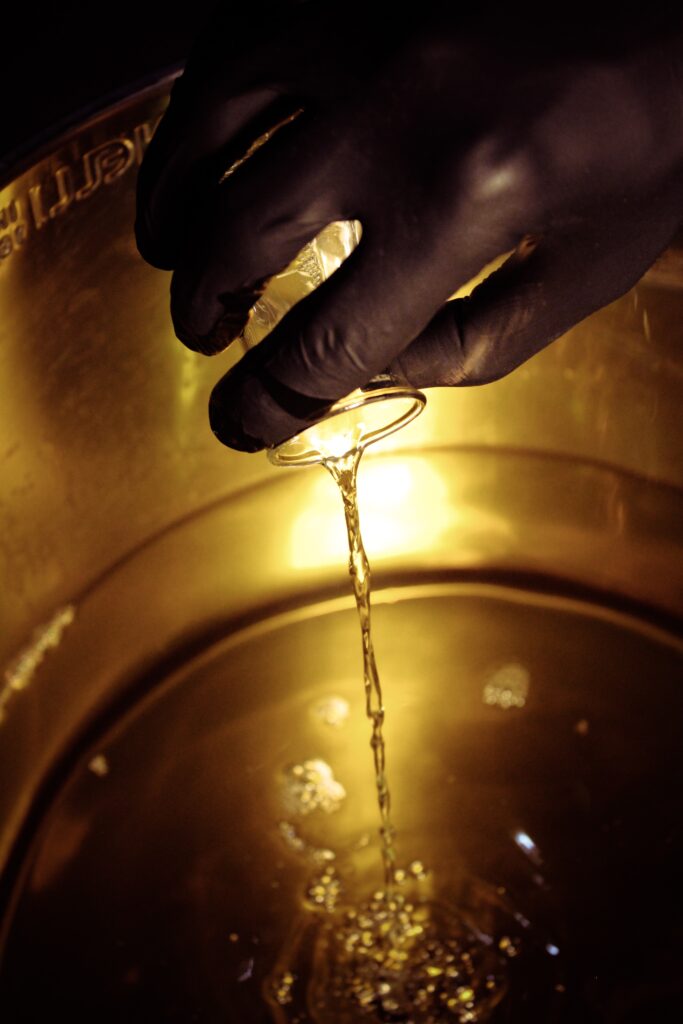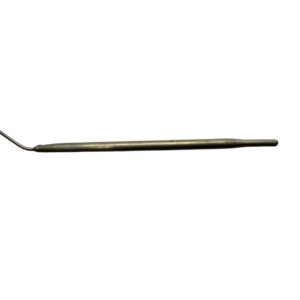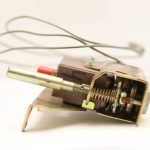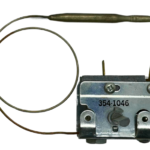
Capillary thermostats regulate temperature across various industries and applications. These devices use a temperature-sensitive fluid, commonly known as the “fill,” within a capillary tube to control temperature. Having the appropriate capillary thermostat tube fill directly affects the thermostat’s performance and reliability. To learn more about the different types of tube fills and their applications, keep reading. For additional information on our capillary thermostats, visit the product page.
Types of Capillary Thermostat Tube Fills
Gas Fills
Gas fills expand and contract with temperature changes. The most common gas fill consists of a mixture of nitrogen and mercury. Nitrogen provides a stable, non-reactive base, while mercury adds a highly responsive element, ensuring precise temperature control and quick response times. Therefore, use gas fills in applications requiring high accuracy and fast thermal cycling.
Liquid Fills
Liquid fills use a temperature-sensitive liquid to control the thermostat’s operation. A common blend of alcohol and water offers a suitable range of temperature control from -30°C to 150°C. Alcohol-based fills have excellent thermal expansion properties and suit applications where precision is not critical but reliable temperature control remains essential.
Wax Fills
Wax fills, made of paraffin-based substances, exhibit significant volume changes with temperature variations. These are particularly useful in applications requiring slow and gradual temperature adjustments, such as household appliances like ovens and refrigerators, where maintaining a steady temperature remains crucial. Consequently, wax fills provide a smooth and continuous response to temperature changes.
Bimetallic Fills
Bimetallic fills utilize the differential thermal expansion of two bonded dissimilar metals. As temperature changes, the metals expand or contract at different rates, causing the bimetallic strip to bend. This mechanical movement controls the thermostat. Bimetallic fills offer durability, cost-effectiveness, and a wide temperature range, making them suitable for heating and cooling systems, industrial equipment, and household appliances.
Electrically Conductive Fills
Electrically conductive fills, such as those containing silicone oil or glycol, depend on changes in electrical conductivity to measure temperature variations. The fill makes direct contact with a temperature sensor, and as the temperature changes, the electrical conductivity of the fill alters. This change is detected and used to control the thermostat. Electrically conductive fills offer precise and responsive temperature control, commonly found in electronic devices and HVAC systems.
STEMCO Capillary Thermostat Tube Fill Options
At STEMCO, we use various liquid fills, including Xylene, Dowsil 550, Therminol 66, and HB40, chosen based on several factors. Below is a cheat sheet for your reference:
| Fluid | Min. Temp | Max. Temp | Required amount for 5/8 Diaphragm Diameter | Required amount for 3/4″ Diaphragm Diameter | Required amount for 1″ Diaphragm Diameter | Leak Test Time Required | Additional Info |
|---|---|---|---|---|---|---|---|
| Xylene | -30°F | 300°F | 0.3955 | 0.2494 | 0.1422 | 8 hours | Use if the capillary temp is below 35°F. |
| Dowsil 550 | -60°F | 720°F | 0.283 | 0.1786 | 0.1019 | 24 hours | Use if the capillary switch requires a food grade. |
| Therminol 66 | -13°F | 650/660°F | 0.2591 | 0.1642 | 0.0938 | 24 hours | Consistent with HB40. A minimum capillary temp 35°F is required. |
| HB40 | -13°F | 600°F | 0.2591 | 0.1642 | 0.0938 | 24 hours | Can go up to 625°F if needed. A minimum capillary temp 35°F is required. |
Having the right capillary thermostat tube fill ensures accurate and reliable temperature control in various applications. Gas fills provide high accuracy and fast response times. Meanwhile, liquid fills offer a wide temperature range. On the other hand, wax fills ensure smooth and gradual adjustments, while bimetallic fills offer durability and cost-effectiveness. Electrically conductive fills provide precise control in electronic applications. By understanding the different types of tube fills, engineers and designers can choose the most suitable option for their specific requirements, ensuring a high level of performance and efficiency.




